Aviation Illustrations Gallery
-
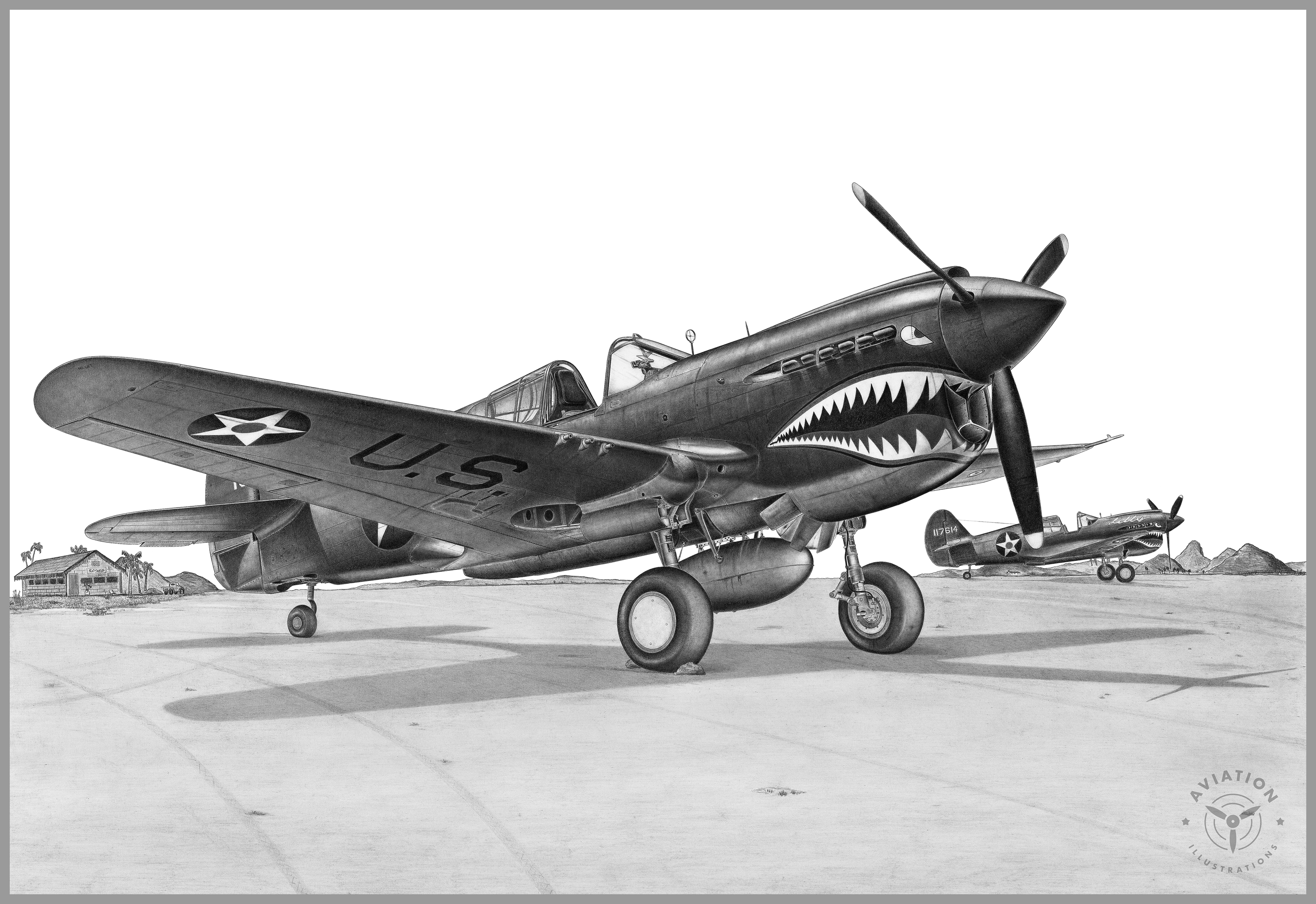
P-40E Warhawk
Purchase / ViewThe Curtiss P-40 first flew in 1938, being a modification of the Curtiss P-36 Hawk. It was the third most produced American Fighter after the P-47 and the P-51. The Warhawk flew with most Allied Air Forces in every theater of operations from the Aleutian Islands to North Africa and the South Pacific. Claire Chennault’s famed Flying Tigers, the 1st American Volunteer Group(AVG), was a unit of the Chinese Air Force. Although ready for combat before the attack on Pearl Harbor, the Tigers didn’t see combat until December 20, 1941. The Flying Tiger’s shark mouth fighter remains among the most recognizable of any individual aircraft of WWII. During the Japanese attack on Pearl Harbor, December 7, 1941, P-40’s from Haleiwa Field engaged the attacking Japanese planes and managed to shoot down several of them. This P-40E, is of the 23rd Fighter Group(CBI) Theater, integrated from the AVG in 1942.
-

P-47N Thunderbolt
Purchase / ViewThe P-47 Thunderbolt was the heaviest single seat fighter of WWII serving in Europe and the Pacific theater. Nicknamed the ‘Jug’, it was one of the best fighter-bombers of the war. Huge for a fighter, it was very fast and it had excellent high altitude performance. Heavily armored and rugged it could, if needed, out dive any fighter the Japanese or Germans possessed. Some of the highest scoring American aces flew the P-47, most of them being in the European theater. Thunderbolts were used extensively as ground support attack aircraft. Exceptionally rugged, P-47’s could take a lot of battle damage and still bring its pilot home safely. With the arrival of the P-47N, with a long range of almost 2,000 miles, the Thunderbolts flying from Okinawa could finally see some air-to-air action over Southern Japan. If used to its maximum potential, the P-47 could defeat any Japanese or German fighter put in the air. After the war, Thunderbolts saw continued action with foreign Air Forces.
-

F4U Corsair
Purchase / ViewThe F4U Corsair was the first single seat fighter to exceed 400 MPH in 1940. Chance Vought’s new design would go on to be the best Marine Corps fighter of the Second World War. Named the ‘Bent Wing Bird’ by the American Navy and Marines, the Japanese had another name for it “Whistling Death’, The US Navy proceeded with carrier trials as early as 1942. However, visibility and landing characteristics delayed deployment until late 1944. The Marines loved their Corsairs because they were faster than the F6F Hellcat and able to carry heavier bomb loads. F4U’s were used extensively during the island hopping campaigns and amphibious landings. The most famous outfit flying the Corsair was VMF-214, the ‘Black Sheep’, commanded by Major Gregory “Pappy” Boyington from the Solomon Islands. Numerous Medal of Honor recipients also flew the Corsair. The F4U in this lithograph is the Marine Fighter Squadron VMF-113, the “Whistling Devils”, while assigned to Engebi Island in 1944,. Also, this Corsair #56 “Sunsetter”, belongs to the Smithsonian National Air & Space Museum and can be seen at the Udvar-Hazy Center near Washington, DC.
-
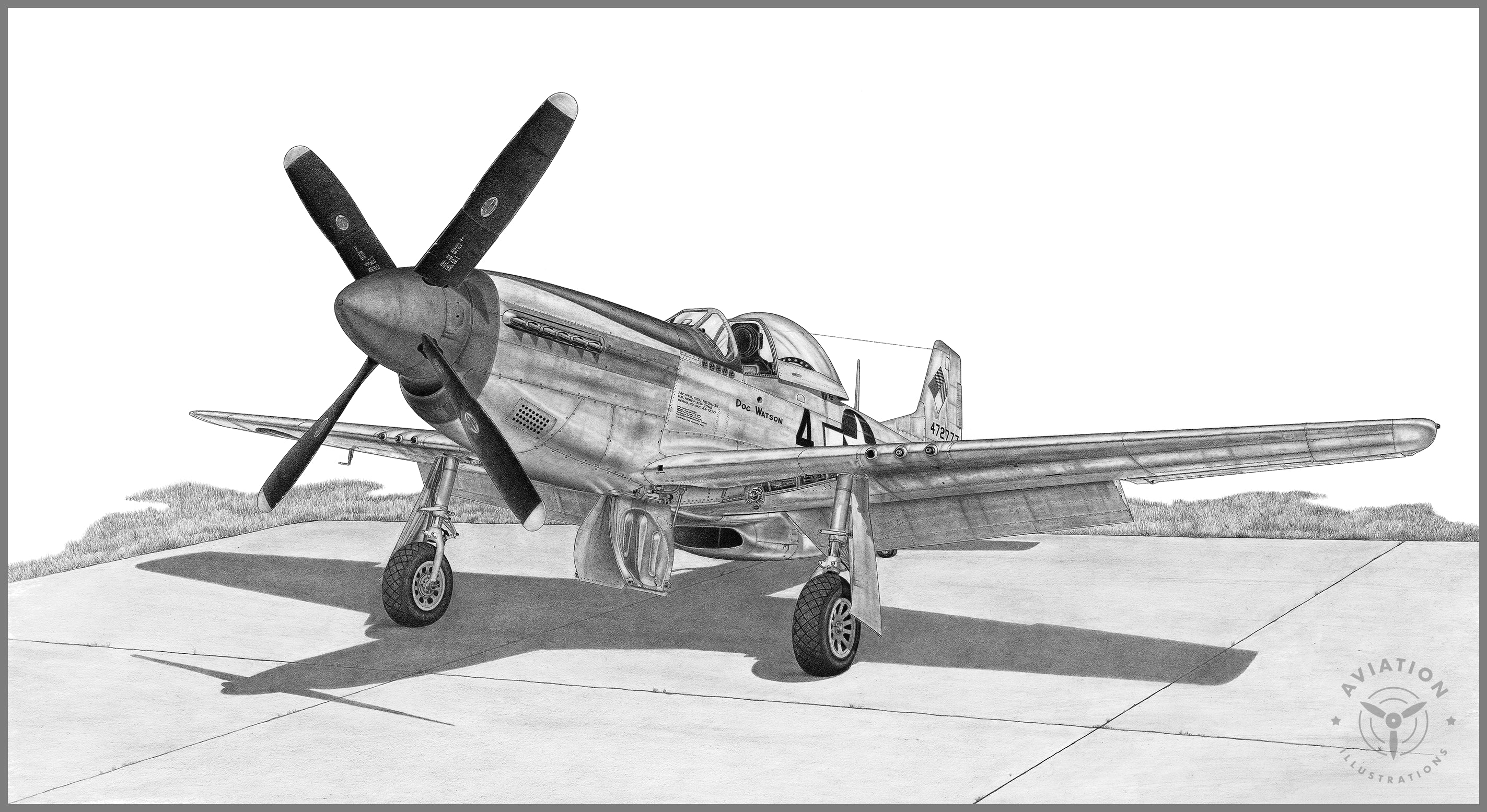
P-51D Mustang
Purchase / ViewThe P-51 actually began its career as the A-36 Apache dive bomber. The first aircraft was designed and built for the British Royal Air Force in only 117 days. Its first flight was in October 1940. The performance of the A-36 was not what the R.A.F. was expecting so it was employed primarily as a ground attack aircraft. After the Rolls Royce Merlin engine was fitted to the Mustang, its performance was greatly increased. The USAAF deployed the first P-51s in October 1943. They were a welcome addition to the 8th A.F. being able to escort the bombers all the way to Berlin and back. With their superb maneuverability and firepower, Mustang pilots soon began to beat the feared Japanese Zero, the German Fw 190, and the Me 109. P-51’s flew in all European Theaters and the China Burma Theater as well. Considered by many to be the best overall fighter of WWII, the P-51 Mustangs looks and performance assures its place in history as one of the best fighter ever built.
-
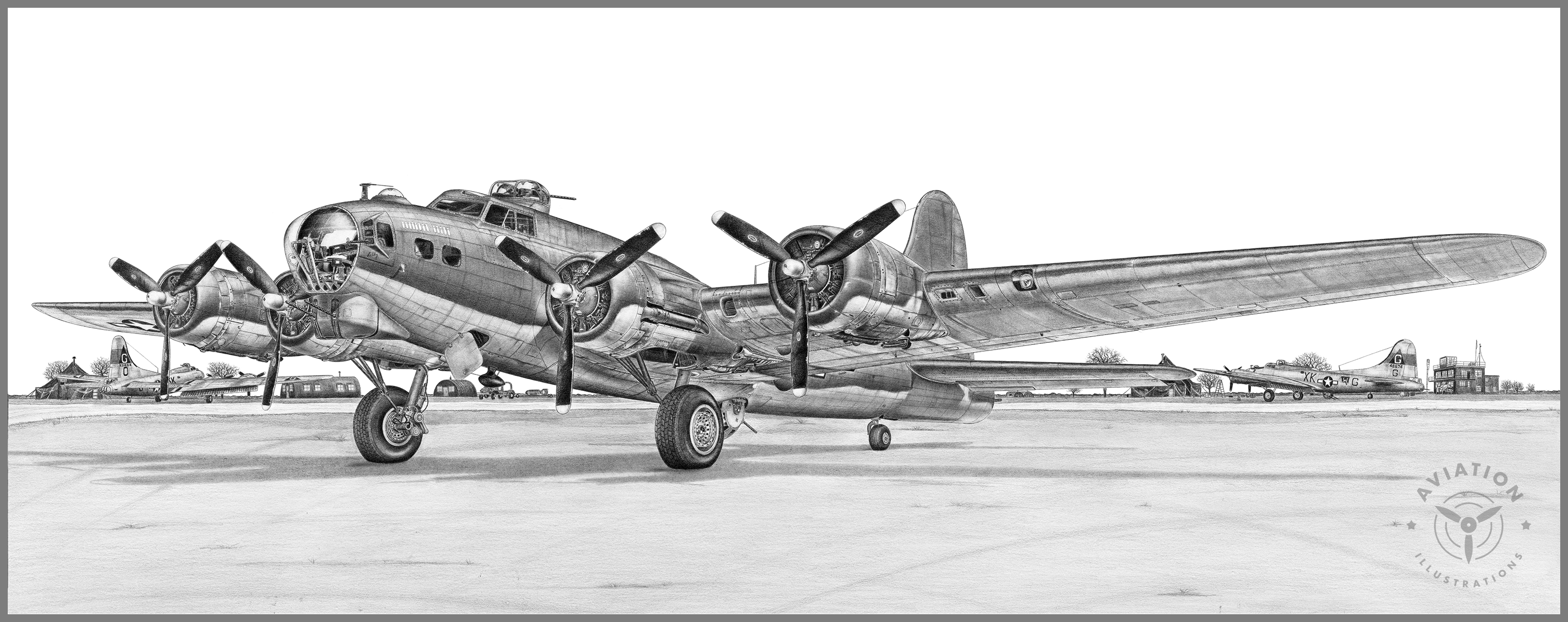
B-17 Flying Fortress
Purchase / ViewThe B-17 Flying Fortress was undoubtedly the most recognized bomber of WWII. Deliveries to the Army Air Corps begin before America’s entry into the war. By 1941, the US was principally concerned with strengthening its forces in the Far East. B-17’s would fly to Clark Field in the Philippine Islands with refueling stops at Hickam Field. Scheduled to arrive on Sunday morning, December 7th, a flight of B-17’s from Hamilton Field, California, came under attack as they approached Pearl Harbor. Carrying no ammunition to defend themselves, the Fortresses could do nothing except land at the first available airfield. The B-17 was favored over the B-24 in the European theater by its crews because it could take more punishment than the B-24’s and still bring their crews home. The most famous B-17 of all, The Memphis Belle, was the first Flying Fortress to complete 25 missions, afterwards returning to the states and touring the country helping to sell war bonds. The last version, the B-17G model incorporated the new chin turret which helped defend from frontal attacks by German fighters. No other bomber in history has evoked such affection from their crews and enthusiasts alike as the B-17 Flying Fortress.
-

B-25J Mitchell
Purchase / ViewThe North American B-25 Mitchell was classified as a twin engine medium bomber and named in honor of General Billy Mitchell, a pioneer of U.S. military aviation and was first flown in the late 1930’s. The B-25 served admirably in all theaters of operation throughout WWII but the majority of B-25’s flew in the Pacific Theater. A safe and forgiving aircraft to fly, the Mitchell was well liked by their crews for its ruggedness and dependability. The B-25 was produced in large numbers and performed various types of missions, everything from medium altitude precision bombing to low-level strafing attacks. Also, it was flown by many allied Air Forces throughout the war and saw service across four decades. The B-25 first gained fame on April 18, 1942, led by Lieutenant Colonel Jimmy Doolittle, when it took off from the aircraft carrier USS Hornet and bombed mainland Japan. This B-25J ‘Lady Lil’ was assigned to the 345th Bomb Group ‘Air Apaches’, 498th Bomb Squadron ‘Falcons’ on the Philippines Islands 1944.
-

P-38J Lightning
Purchase / ViewFirst flight of the P-38 took place in January of 1939. It was clearly the fastest US fighter at the time. Deployed to the European theater and the Mediterranean theater, the P-38 excelled as a ground support attack aircraft. However, the Lightning was more successful as a fighter interceptor in the South Pacific than in any other theater of operations. Richard Bong became the countries highest scoring ace while flying the P-38. Used on one of the most significant missions of the Pacific War, sixteen P-38’s intercepted and shot down Admiral Isaroku Yamamoto’s Betty Bomber. The architect of the Pearl Harbor attack, he was on an inspection tour of Bougainville island. Famed aviator Charles Lindbergh toured the South Pacific as a civilian contractor. He was sent to help improve the performance of the P-38. While there, he took part in a number of combat missions and even shot down one Japanese aircraft. After the war, surplus P-38’s were sold to various countries where they served for many years with distinction.
-
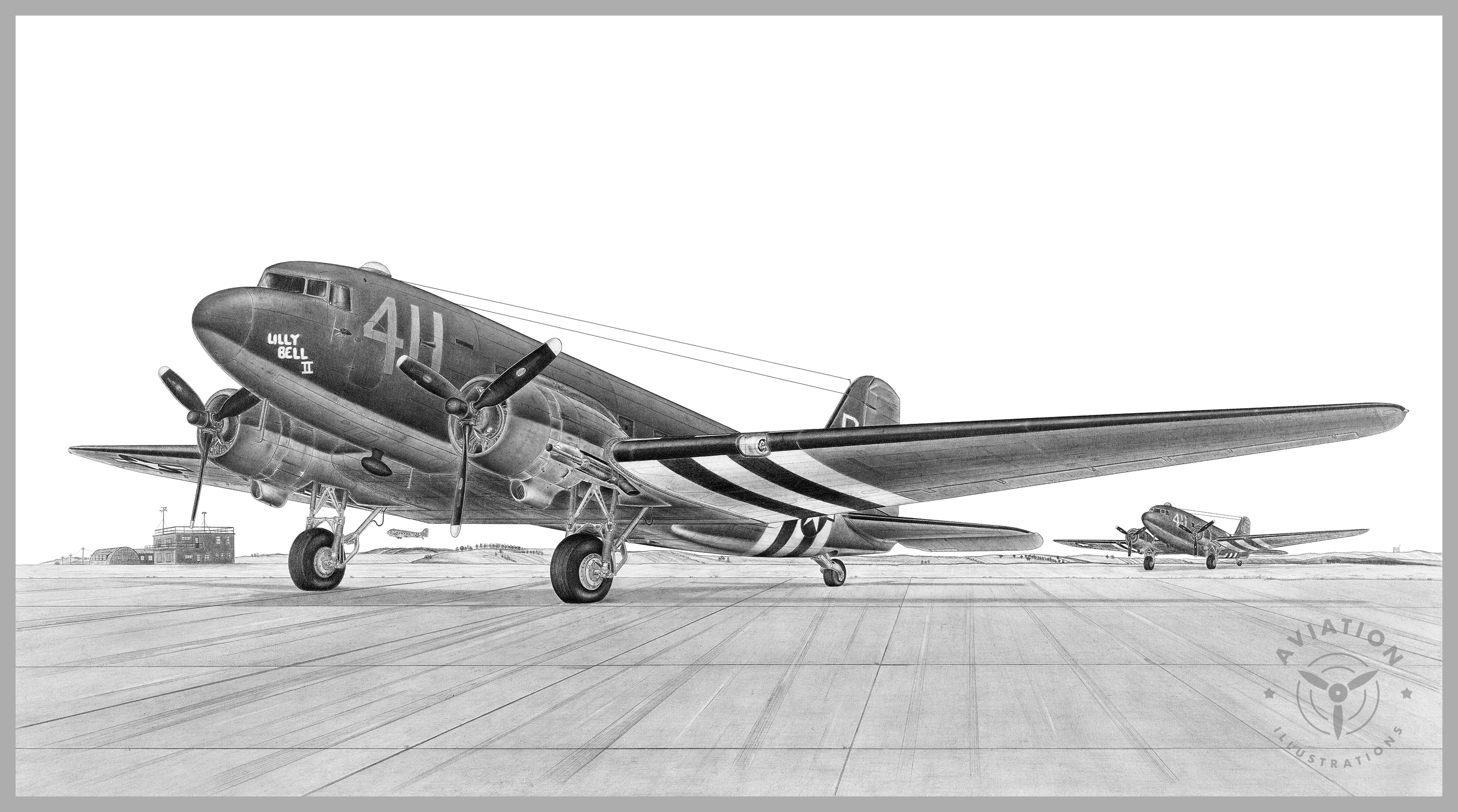
C-47A Skytrain
Purchase / ViewThe C-47A Skytrain is the military version of a modified Douglas DC-3 commercial airliner. The C-47’s first flight was in December of 1941 with over 10,000 aircraft being assembled. Its primary mission was to transport troops, cargo, and the wounded. While C-47’s flew in all theaters of operation, the Pacific Campaign is where their range and cargo carrying made them an invaluable asset. One of C-47’s more memorable roles took place on D-Day, June 6, 1944, dropping paratroops behind enemy lines in Normandy, France, to begin the liberation of the European Continent. This particular C-47 named, “Lilly Bell, II”, was assigned to the 89th Troop Carrier Squadron, 438th Troop Carrier Group based at Greenham Common. General Eisenhower visited the 438th on the eve of the mission to encourage the airborne troops and aircrews and watched them as they took off. “Lilly Bell, II” was one of the lead aircraft to drop its paratroops from the 101st Airborne Division north of the Normandy town of Carentan. C-47s continued to fly for numerous Air Forces long after the end of WWII and you can still see these amazing aircraft flying today from airfields across the country and around the world.
-

F-15C Eagle
Purchase / ViewThe F-15 is considered among the most successful fighters ever built. First flight was in July 1972 and entered service in 1976. The F-15 is an all weather air superiority combat aircraft with over 100 combat victories with no losses to enemy aircraft. With a top speed of mach 2.5 plus, giving the F-15, a very high thrust to weight ratio which enables it to accelerate vertically. In 1975, an F-15A broke eight time-to-climb world records reaching an altitude of over 98,000 feet in just over three minutes. Equipped with a 20mm cannon and a variety of air to air missiles, the F-15 can carry up to 16,000 lbs of mixed ordinance. During the Persian Gulf war, F-15’s accounted for 36 of the 39 Air Force aerial victories. Stationed at numerous military bases throughout the world, the F-15 Eagle is still unquestionably one of the greatest fighters ever built and is expected to fly for the U.S. Air Force until the year 2025.
-

F-16 Fighting Falcon
Purchase / ViewThe General Dynamics F-16 Fighting Falcon is a multirole jet fighter developed for the U.S. Air Force. It was designed as a lightweight day fighter and has evolved into a successful all weather multirole aircraft. First flight was in December 1973 and delivered to the Air Force in 1978. The F-16 was the first U.S. fighter to incorporate the fly-by-wire flight control system giving it unmatched maneuverability. The F-16 carries the same M61 Vulcan cannon as the F-15 and can carry a variety of air to air missiles. It also has payload capacity at around 15,000 lbs. Top speed is mach 2.0 plus and has a maximum ferry range of approximately 2,200 miles. The Falcon was deployed to the Persian Gulf War and flew a variety of sorties to include ground support missions. The F-16 is the aircraft used by the USAF aerial demonstration team, The Thunderbirds, and has been produced in numerous variations. The F-16 has been sold to over 25 foreign nation’s Air Forces.
-

F-117 Nighthawk
Purchase / ViewThe Lockheed F-117 is the world’s first operational aircraft initially designed around stealth technology. The Stealth Fighter, as it is more commonly known, is a single seat, twin engine, subsonic, ground attack aircraft designed by the famed Lockheed Skunkworks. It first flew in 1981 and was revealed to the public in 1988. First combat debut was the United States invasion of Panama in 1989. During the Gulf War in 1991, the F-117 accounted for only 2.5 percent of American aircraft but they struck more than 40 percent of all strategic targets. Its stealth characteristics protected it from SAM and AAA saturated environments enabling it to fly missions in downtown Baghdad. Only one Stealth Fighter was lost in combat operations during the Kosovo War. The Air Force retired the F-117 in 2008, primarily due to the introduction of the F-22 Raptor.
-

SR-71 Blackbird
Purchase / ViewThe Lockheed SR-71 is unquestionably the world’s most recognizable airplane. It was a long-range, high-altitude strategic reconnaissance aircraft designed by the famed Kelly Johnson, head of the Lockheed Skunk Works division. Its first flight was on 22 December 1964, a development from the A-12 reconnaissance aircraft. Shortly thereafter they were assigned to the 9th Strategic Reconnaissance Wing at Beale AFB, CA. With a crew of two, the SR-71 flew at Mach 3+ and an altitude of 80,000 plus feet. KC-135Q aerial tankers, using specialized JP-7 Jet fuel, were required to refuel the plane often since the J58 engines gulped fuel at an alarming rate. One SR-71 set a world speed record on 6 March 1990, flying from Los Angeles, CA to Washington, D.C., in 1 hour, 4 minutes and 20 seconds with an average speed of 2124 mph, marking this as the last military flight of the SR-71 Blackbird.
-

RQ-4B Global Hawk
Purchase / Viewhe Northrop Grumman RQ-4 Global Hawk is a high altitude, long endurance, remotely piloted aircraft. Its mission is to provide intelligence, surveillance and reconnaissance capabilities for the USAF. The RQ-4 began as an Advanced Concept Technology Demonstration “ACTD” aircraft. Remotely piloted by two pilots and a sensor operator, the Global Hawks mission is very similar to that of the famed Lockheed U-2 spy plane. While flying at an altitude of 60,000 feet and a range of over 12,000 miles, the RQ-4 can survey as much as 40,000 SQ miles of terrain in a day. With increased tensions around the world, the Global Hawks capabilities will be in high demand for the foreseeable future.
-
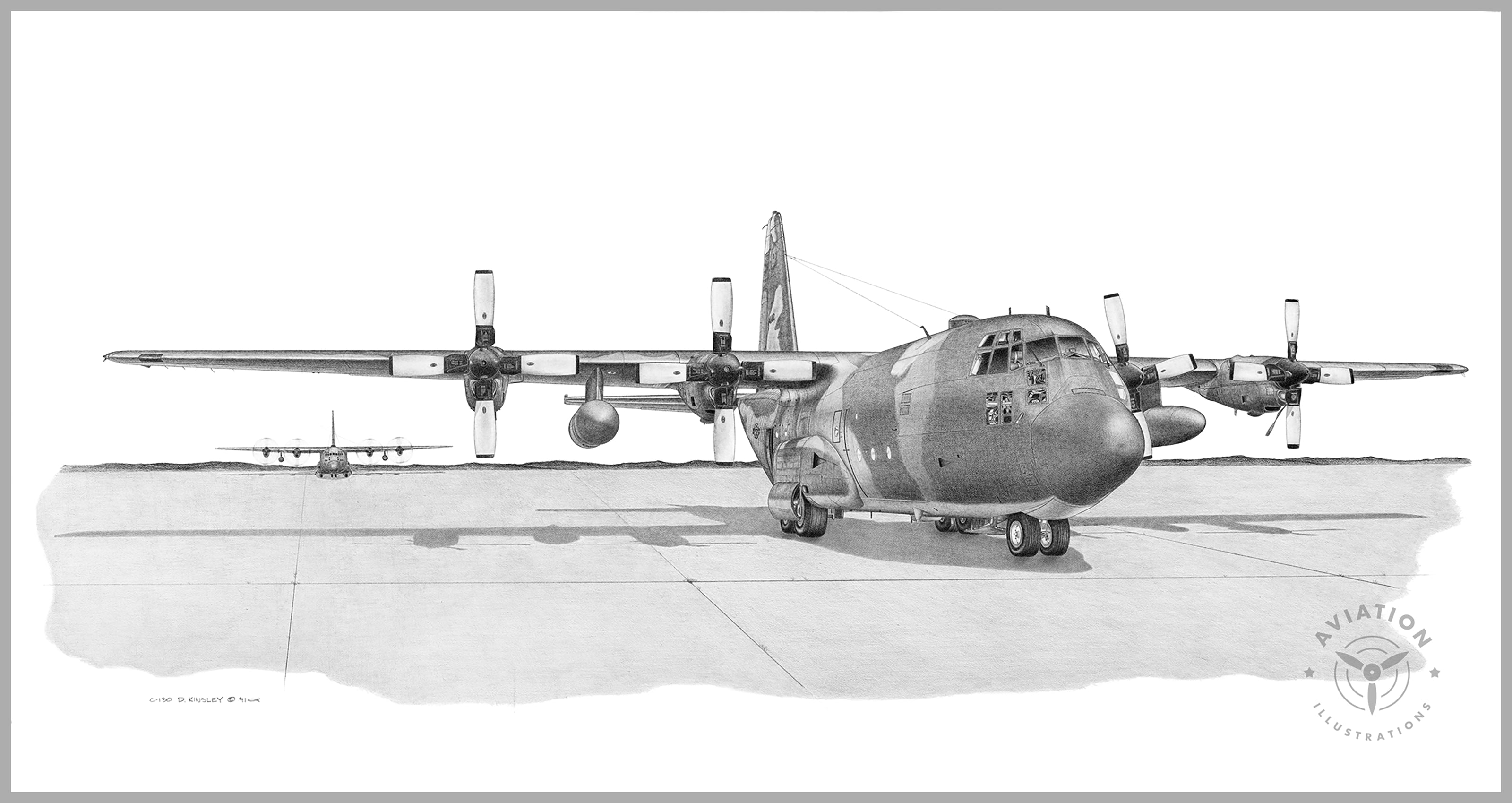
C-130 Hercules
Purchase / ViewThe Lockheed C-130 Hercules is a medium lift, four engine, turboprop transport. Its first flight was in 1954 and went in to service in 1956. The Hercules is undoubtedly the most successful transport ever developed with numerous variants ranging from the standard cargo/troop carrier to AC-130 gunship to the KC-130 aerial tanker. The C-130 Hercules also holds the record for the largest and heaviest aircraft to take off and land on an aircraft carrier. C-130’s saw extensive use in the Vietnam War, the Persian Gulf War and current operations in Iraq and Afghanistan. The C-130 continues to be built with the latest model being the C-130J. It is the only military aircraft to remain in production for 50 years and is flown by more than 60 nations. No other transport aircraft can boast such a long and diverse career.
-

C-141B Starlifter
Purchase / ViewThe Lockheed C-141 Starlifter was a heavy lift military aircraft flown exclusively with the U.S. Air Force with the exception of one C-141 being flown by NASA. It was designed to replace the C-124 Globemaster, a slow piston engine aircraft. It first flew in 1963 with production deliveries beginning in 1965. A ferry range of over 6000 miles, it could carry loads of up to 90,000 lbs. over short distances. It could carry up to 154 troops or 123 paratroopers. C-141 Starlifter’s were used extensively during the Vietnam War delivering troops and supplies to airbases throughout East Asia. In 1973, C-141s were used to evacuate American P.O.W.s from Hanoi North Vietnam flying them to Clark Air Base, Philippines. The C-141 was modified in 1979, stretching the fuselage some 23 feet. The Starlifter remained in service for nearly 40 years and finally being retired in 2006.
-

C-17 Globemaster III
Purchase / ViewThe C-17 is a very heavy lift military transport. Developed in the 1980’s as a replacement for the C-130, due to its short takeoff and landing characteristics, it however eventually replaced the C-141. The C-17 is a rapid strategic airlifter of cargo and troops to main operating bases throughout the world. It also performs airdrop missions and acts as a medical evacuation airlifter. The C-17 also performs the duties as the Presidential Support aircraft carrying the President’s Limousine and other equipment. There are currently over 200 C-17’s serving with the U.S. Air Force and the Air Forces of other nations throughout the world. The C-17 will continue to be the Air Forces choice for heavy lift aircraft for years to come.
-
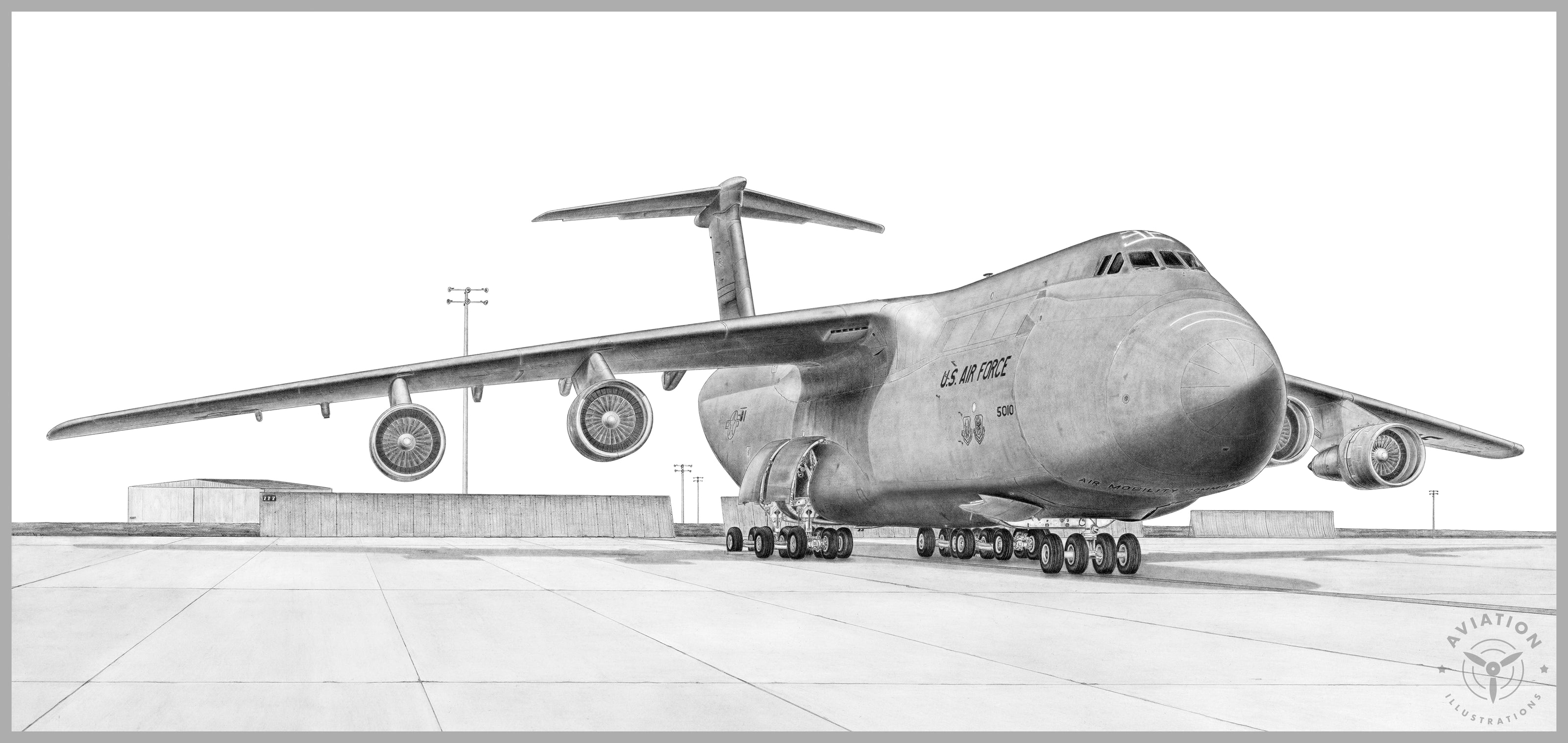
C-5 Galaxy
Purchase / ViewThe Lockheed C-5 Galaxy was developed with the need for a very heavy lift military transport. Being able to carry large oversized loads for the U.S. Army, navy and Marines plus huge amounts of freight, the C-5 was for many years the world’s largest aircraft. Its first flight was in March of 1968, with deliveries beginning in 1969. With its distinctive engine whine, the C-5 is able to carry loads up to 200,000 lbs and fly nonstop, with in-flight refueling, to anyplace on the globe. In 1982, the C-5 production line was again running, this time to produce a new version of the C-5. The C-5B was delivered in 1986 producing only 50 aircraft with avionics upgrades in 1998. With the re-engining of all C-5B airframes the C-5M Super Galaxy will continue to fly for many years to come.
-
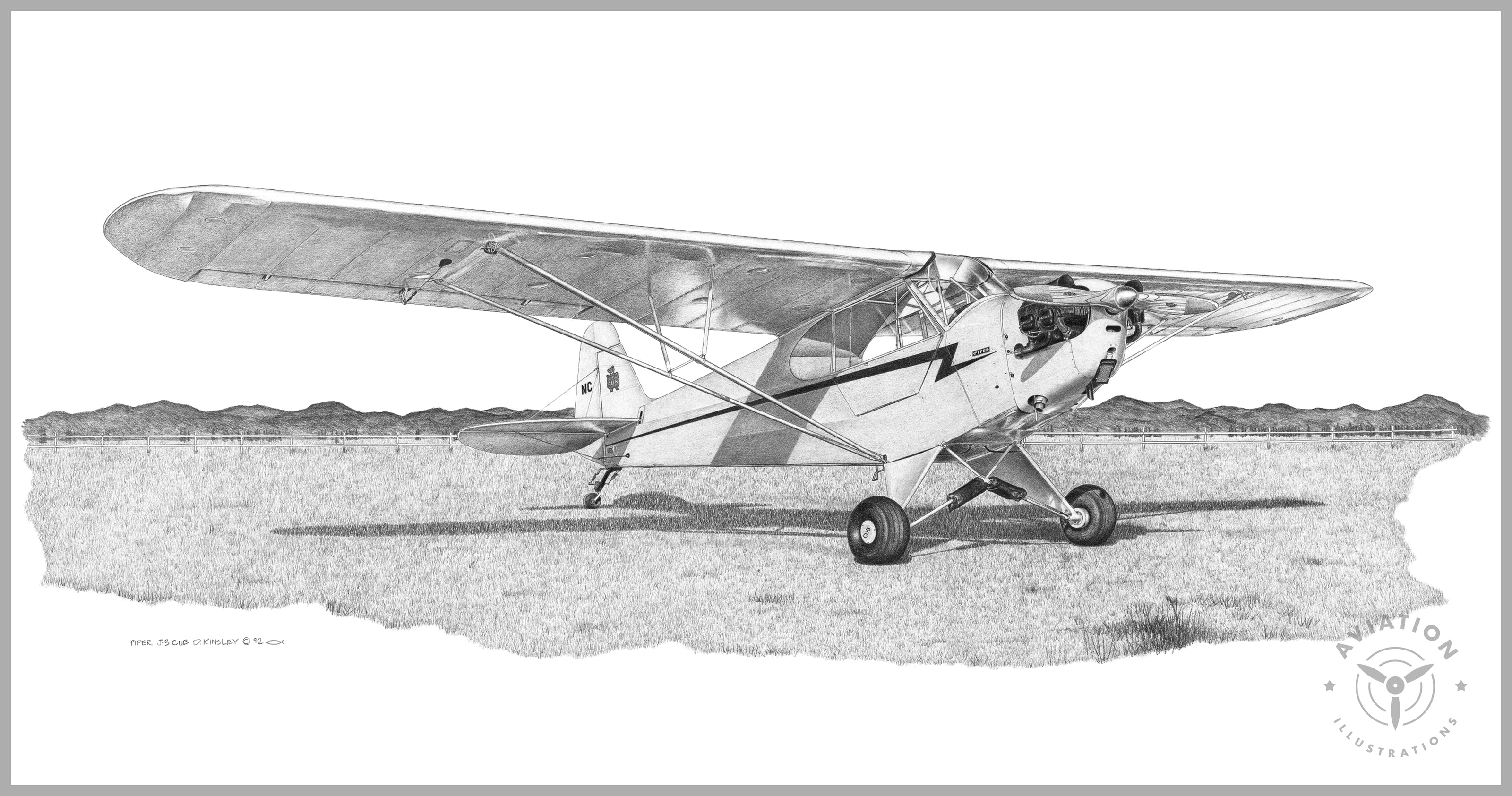
Piper J-3 Cub
Purchase / ViewThe Piper J-3 Cub, with its distinctive yellow paint scheme, is regarded as one of the most popular and best known light aircraft of all time. The small, simple, light airplane was built between 1937 and 1947 by the Piper Aircraft Co. With the growing realization that the U.S. might be drawn into war, the Civilian Pilot Training Program(CPTP) was formed to train new pilots for possible service in the U.S. military. Seventy-five percent of all new pilots in the CPTP were trained on the J-3. Wartime demand would increase the production rate to an unbelievable one Piper Cub being built every 20 minutes. The military version was designated as the L-4, which only required the aircraft to be painted in an olive drab paint scheme. An icon of the era, and of American general aviation, the J-3 has long been loved by pilots and the general public alike.
-
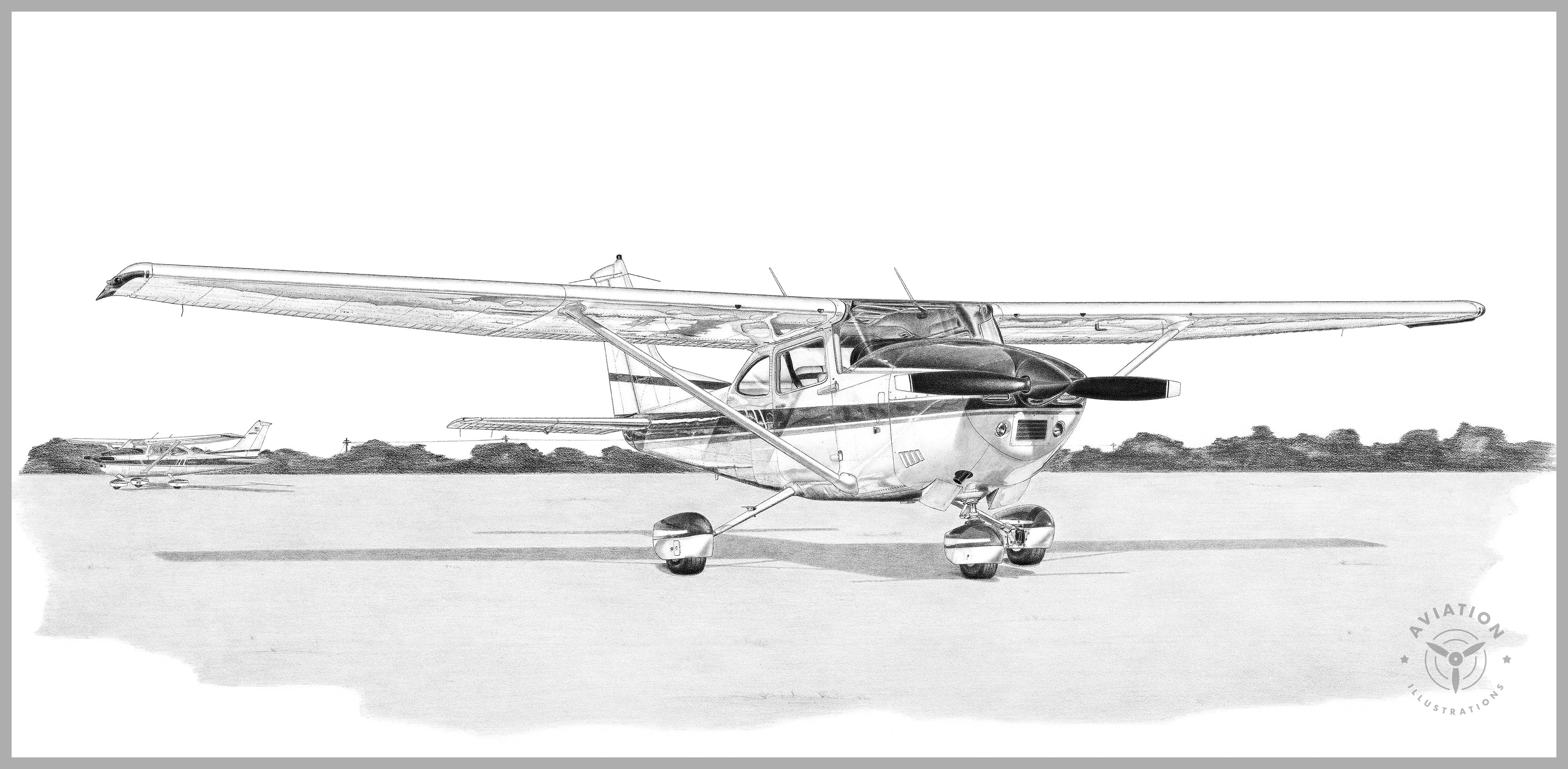
Cessna 182
Purchase / ViewCessna aircraft are unquestionably the most recognizable civil aircraft flying today. Introduced in 1956, the Cessna 182 is very similar to its slightly smaller sister, the Cessna 172. Newer versions of the 182 have larger windows and more powerful engines. Some versions have retractable landing gear and others have floats for water use. The Cessna 182 is used by a multitude of civil operators and flight schools worldwide including the Civil Air Patrol for search and rescue operations. Numerous governments and foreign militaries fly the versatile and reliable Cessna 182 with over 23,000 examples built, the Cessna 182 will continue to fly in various capacities for many years to come.




















